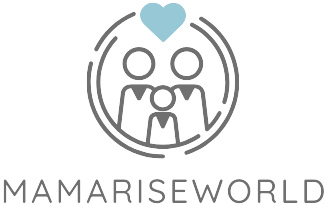Table of Contents
ToggleRoblox isn’t just a game; it’s a phenomenon that’s taken the digital world by storm. But when did this virtual playground first open its pixelated gates? If you’ve ever wondered how this platform evolved from a simple idea to a global sensation, you’re in for a treat.
Overview of Roblox
Roblox emerged in 2004, founded by David Baszucki and Erik Cassel. This online platform allows users to create and play games designed by fellow users. Originally named DynaBlocks, the platform underwent a rebranding to Roblox in 2005. The name combines “robots” and “blocks,” signifying the building aspects inherent in the games.
A surge in popularity occurred in the early 2010s, with significant user growth fueled by its free-to-play model. By 2013, Roblox’s user base surged past 30 million. Diverse game genres became available, including obstacle courses, role-playing, and simulations.
Accessibility played a crucial role in Roblox’s rise. Available on multiple device platforms, users could access it on PCs, mobile devices, and consoles. A robust development environment called Roblox Studio allows users to create and monetize their own games. The introduction of the virtual currency, Robux, enabled developers to earn real money through in-game purchases.
Community engagement remained vital throughout its history. Events like the Annual Bloxy Awards celebrate outstanding achievements within the platform. Collaboration with popular franchises, such as Warner Bros. and Disney, further broadened its reach.
As of 2021, Roblox boasts over 200 million monthly active users, highlighting its global presence in the gaming industry. The platform’s continuous innovation and community focus support its status as a leader in online gaming experiences.
The Birth of Roblox
Roblox started its journey in 2004, created by David Baszucki and Erik Cassel. Originally named DynaBlocks, the platform evolved to embrace a broader audience.
Founding and Initial Release
In 2004, the concept of Roblox began to take shape. Early development focused on user-generated content, allowing players to engage actively. The initial launch unfolded in 2005, when the platform was rebranded from DynaBlocks to Roblox. The new name combined “robots” and “blocks,” emphasizing creativity and building. This change represented a pivotal moment in the platform’s identity.
Key Milestones in Early Development
Early development milestones significantly shaped Roblox. By 2006, the introduction of user accounts enabled social interaction within the platform. The launch of Roblox Studio in 2007 provided essential tools for game creation. Creator monetization mechanisms followed in 2013, allowing developers to earn through their games. Membership options, introduced in 2013, enhanced user engagement further. All these developments laid solid foundations for Roblox’s ensuing success in the gaming industry.
Evolution of Roblox Through the Years
Roblox’s evolution reflects significant milestones that shaped its platform and community. Major updates enhanced user experiences, allowing for creative expressions.
Major Updates and Features
Roblox launched user-generated content in 2005, allowing players to create their own games. The introduction of Roblox Studio in 2007 provided tools for advanced game design, fostering creativity. Daily login rewards appeared in 2013, encouraging routine engagement. In 2018, the platform unveiled a VR mode, immersing users in virtual worlds. Customizable avatars were enhanced in 2019, allowing for greater personalization. Significant in 2020, the introduction of the Avatar Shop expanded the monetization options for creators and players alike.
Expansion and Growth
Roblox saw rapid expansion after user-generated content became a focal point. By 2013, the platform’s user base surpassed 30 million, a testament to its engaging game library. International reach grew as localized versions launched in multiple languages. Collaborations with major brands further contributed to its visibility. By 2021, Roblox achieved over 200 million monthly active users, solidifying its place in the online gaming landscape. The platform’s continuous innovation and community events enhanced user retention, driving further growth.
Cultural Impact of Roblox
Roblox significantly influenced gaming culture and user interaction through its unique platform.
Influence on Gaming Community
Roblox fostered a vibrant gaming community by allowing users to create and monetize their games. Game creation tools empowered millions of users, enhancing creativity. Players actively engage with developers through user feedback, creating a collaborative development environment. Numerous creators built popular games, establishing careers solely within the platform. The platform’s diverse offerings encourage users to explore various genres, promoting inclusiveness. User-generated content has transformed how players perceive game development, establishing a new norm in the gaming industry. Annual events like the Bloxy Awards celebrate creators, strengthening community bonds. This inclusivity and collaboration mark Roblox’s importance in the modern gaming landscape.
Educational Uses of Roblox
Educators increasingly utilize Roblox as a learning tool, incorporating it into various curricula. The platform’s game development tools facilitate STEM learning, enhancing problem-solving skills. Teachers design games that promote creativity and critical thinking, providing engaging experiences. Programs combine gaming with educational content, making learning enjoyable for students. Coding skills become accessible through Roblox Studio, encouraging tech-savvy learners. Collaborative projects foster teamwork and communication amongst students. As a result, Roblox acts as more than just a gaming platform; it serves as an innovative educational resource that engages learners of all ages.
Roblox has transformed from a simple gaming platform into a cultural phenomenon since its inception in 2004. Its commitment to user-generated content and community engagement has redefined the gaming landscape. With millions of active users and a diverse array of games, Roblox continues to innovate and adapt.
The platform’s role in education and creativity showcases its versatility beyond entertainment. As it evolves, Roblox remains a significant player in both gaming and learning, inspiring future generations of creators. The journey of Roblox is far from over, and its impact will likely resonate for years to come.





